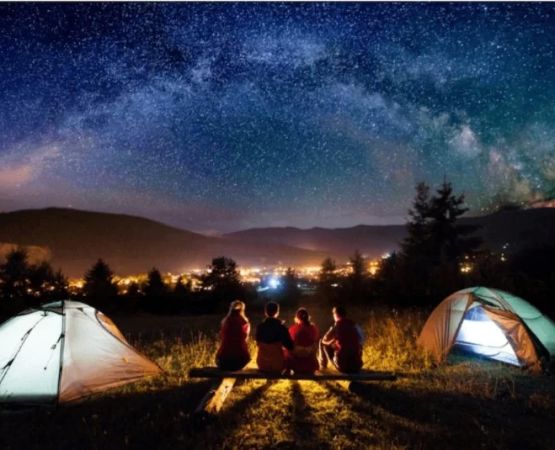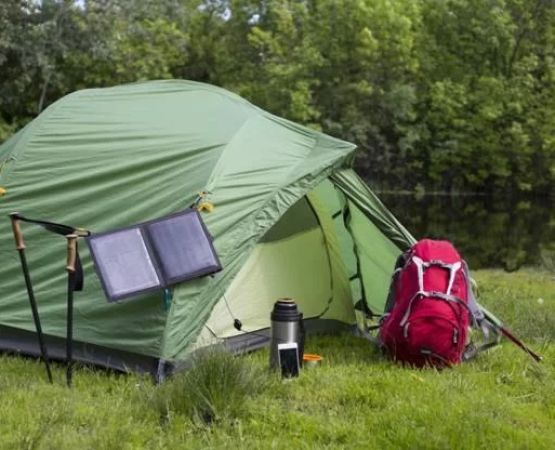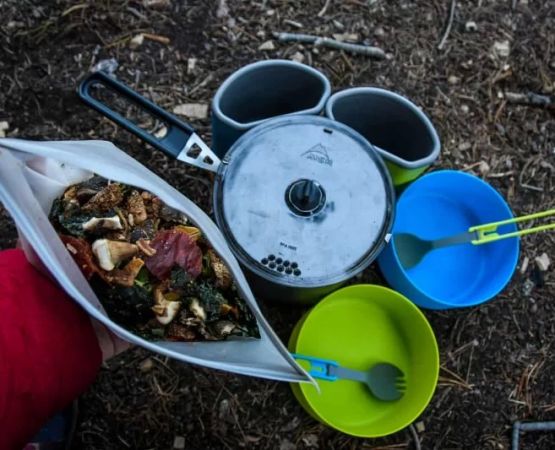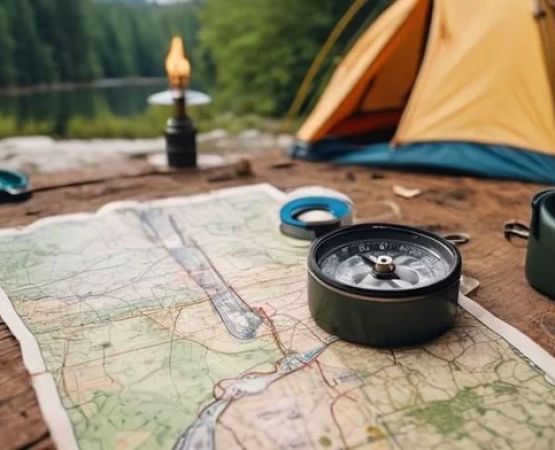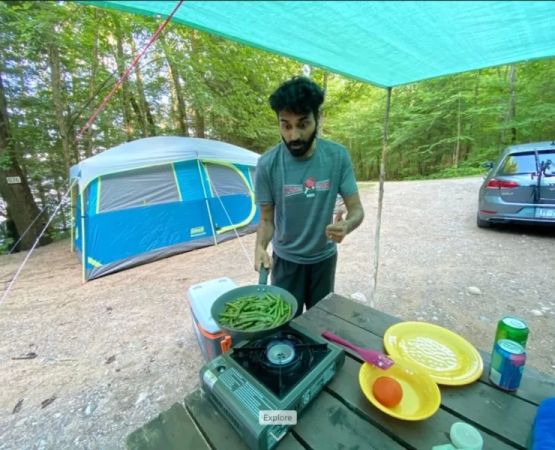How to Safely Camp Near Wildlife and Preserve Nature
Camping in the wild is one of the most exciting and rewarding experiences you can have. Whether you're exploring national parks, remote forests, or backcountry areas, there's something magical about immersing yourself in nature. However, when you camp near wildlife, it is important to follow certain precautions to ensure both your safety and the preservation of the natural environment. In this article, we will explore practical tips on how to safely camp near wildlife and preserve nature, so you can enjoy your adventure while being responsible and respectful to the ecosystem.
Wildlife encounters can be one of the most memorable aspects of camping, but they also come with risks. Bears, deer, wolves, and other animals can be found in many natural areas, and it’s essential to understand how to interact with them safely. In addition, camping in these areas means you must also think about how your actions affect the environment. This includes minimizing waste, respecting local wildlife habitats, and avoiding disturbing natural processes. With the right approach, you can ensure a positive experience for both yourself and the wildlife around you.
- 1. Understanding Wildlife Behavior
- 2. Essential Gear for Camping Near Wildlife
- 3. How to Keep Your Campsite Safe from Wildlife
- 4. Responsible Waste Management and Preservation Tips
- 5. Educating Yourself About Local Wildlife
- 6. Sustainable Camping Practices to Preserve Nature
1. Understanding Wildlife Behavior
Before heading out into the wilderness, it’s crucial to educate yourself about the types of wildlife that live in the area you plan to visit. Each species has its own habits, territorial boundaries, and reactions to human presence. Understanding these behaviors can help you avoid dangerous situations and better appreciate the wildlife around you.
For example, bears are often attracted to campsites due to food scents, and they may approach if they feel there is an easy meal available. On the other hand, animals like deer may be more curious but typically avoid human interaction. Learning the warning signs of aggression or stress in animals—such as raised hackles, grunting, or charging behavior—can also help you stay safe. The more you know about the wildlife in your chosen area, the better prepared you will be to handle potential encounters.
2. Essential Gear for Camping Near Wildlife
When camping near wildlife, having the right gear is vital to ensure your safety and protect the natural environment. Some key items to bring along include:
1. Bear-Proof Food Storage
If you’re camping in an area with bears, having a bear-proof food storage system is essential. This could include bear-resistant food containers or hanging food in a tree, away from your campsite. Not only does this protect you from bear encounters, but it also prevents the animal from becoming habituated to human food.
2. Wildlife Deterrents
Using scent-blocking bags and sprays can help reduce the chances of animals being attracted to your campsite. Additionally, some campers use sound deterrents or motion-activated lights to keep wildlife at a safe distance. These tools, when used responsibly, can help reduce the chances of a wildlife encounter, while still allowing you to enjoy nature’s beauty.
3. Proper Clothing and Gear
In areas where you may encounter dangerous wildlife, wearing sturdy, weather-appropriate clothing is a must. Be sure to wear durable boots, long pants, and a hat. Also, bring along items like insect repellents to avoid bites and scratches, especially when camping in wooded or marshy areas where wildlife tends to be more active.
3. How to Keep Your Campsite Safe from Wildlife
Preventing wildlife from approaching your campsite starts with proper planning and behavior. Here are some key strategies to keep in mind:
1. Keep a Clean Campsite
Cleanliness is one of the most effective ways to avoid attracting wildlife to your campsite. Always store food securely and dispose of trash properly. Food scraps can attract animals from miles away, so packing out all of your waste is crucial. If you’re cooking, be sure to clean your pots and utensils thoroughly after each use.
2. Maintain a Safe Distance
If you do encounter wildlife, always give them plenty of space. Never approach or try to feed wild animals, as this can lead to dangerous behaviors, such as animals becoming overly familiar with humans. Use binoculars or a camera to observe wildlife from a safe distance, and always stay in your tent or vehicle if an animal is near.
3. Proper Campsite Layout
Consider setting up your campsite in a way that makes it more difficult for animals to access your sleeping area. Keep tents far away from food storage areas and use a campfire ring or bear-safe enclosure for cooking and food prep. This helps ensure that animals are not tempted to wander too close to where you’re resting.
4. Responsible Waste Management and Preservation Tips
Preserving nature during your camping trip is just as important as keeping yourself safe. By managing waste responsibly and following Leave No Trace principles, you can minimize your environmental footprint:
1. Pack Out All Waste
One of the most fundamental rules of camping is to pack out all waste, including food scraps, packaging, and human waste. Always bring biodegradable soap for cleaning and dispose of it properly. Many areas now require campers to use "restrooms" or "pit toilets" for waste to minimize environmental impact.
2. Use Eco-Friendly Products
Try to use natural, eco-friendly products when camping near wildlife. Avoid using chemical-based lotions, deodorants, and cleaning products, as these can leave harmful residues that can affect local wildlife. Opt for biodegradable soaps and shampoos and refrain from washing these products in natural water sources.
3. Leave Natural Habitat Undisturbed
Don’t disturb wildlife habitats or plants in the area. Stick to marked trails and camp in designated sites. If you’re gathering firewood, ensure it’s dead and downed wood. This ensures that the local ecosystem remains intact and that your presence does not disrupt local wildlife.
5. Educating Yourself About Local Wildlife
Before embarking on your camping adventure, it’s essential to learn about the specific wildlife in the area. Research the species that you might encounter, their habits, and how they interact with their environment. You can often find this information through local parks, wildlife reserves, or nature centers.
Understanding the local wildlife will help you make better decisions during your trip. For example, if you're camping in bear country, knowing the best practices for bear safety can prevent potential conflicts. It’s also helpful to learn about wildlife migration patterns, mating seasons, and food sources, so you can better prepare for encounters with certain species.
6. Sustainable Camping Practices to Preserve Nature
Sustainable camping practices are not just about protecting wildlife—they are also about preserving the beauty of the environment for future generations. By practicing sustainability during your camping trips, you help ensure that natural spaces remain pristine and accessible for others. Here are some best practices:
1. Respect Local Guidelines and Regulations
Many parks and nature reserves have specific rules and guidelines in place to protect both wildlife and visitors. Always familiarize yourself with these regulations before setting out. These might include restrictions on campfires, specific areas to avoid, or guidelines for interacting with wildlife.
2. Choose Eco-Friendly Campgrounds
Whenever possible, choose campgrounds that prioritize sustainability and conservation. Many eco-friendly campgrounds feature composting toilets, solar-powered amenities, and recycling programs that help reduce your environmental footprint. Supporting these sites helps promote eco-friendly practices within the camping industry.
3. Volunteer for Environmental Protection Programs
If you’re passionate about preserving nature, consider volunteering with local conservation programs. Many national parks and wildlife sanctuaries offer volunteer opportunities for clean-up efforts, habitat restoration, and educational outreach. Volunteering is a great way to give back to the environment and deepen your connection to the places you love to explore.
By following these tips for camping safely near wildlife and preserving nature, you can enjoy a fulfilling outdoor experience while ensuring that the beauty of the wilderness remains intact for years to come. Whether you're a seasoned camper or just starting, remember that nature is delicate, and we all have a role in protecting it.
For more information on eco-friendly camping and outdoor adventures, visit Pine Cliff Resort.
SEO Title: How to Safely Camp Near Wildlife and Preserve Nature
SEO Keywords: camping near wildlife, eco-friendly camping, camping tips, wildlife safety, nature preservation
SEO Description: Learn how to safely camp near wildlife and preserve nature with practical tips on responsible camping, waste management, and how to respect local wildlife habitats.

